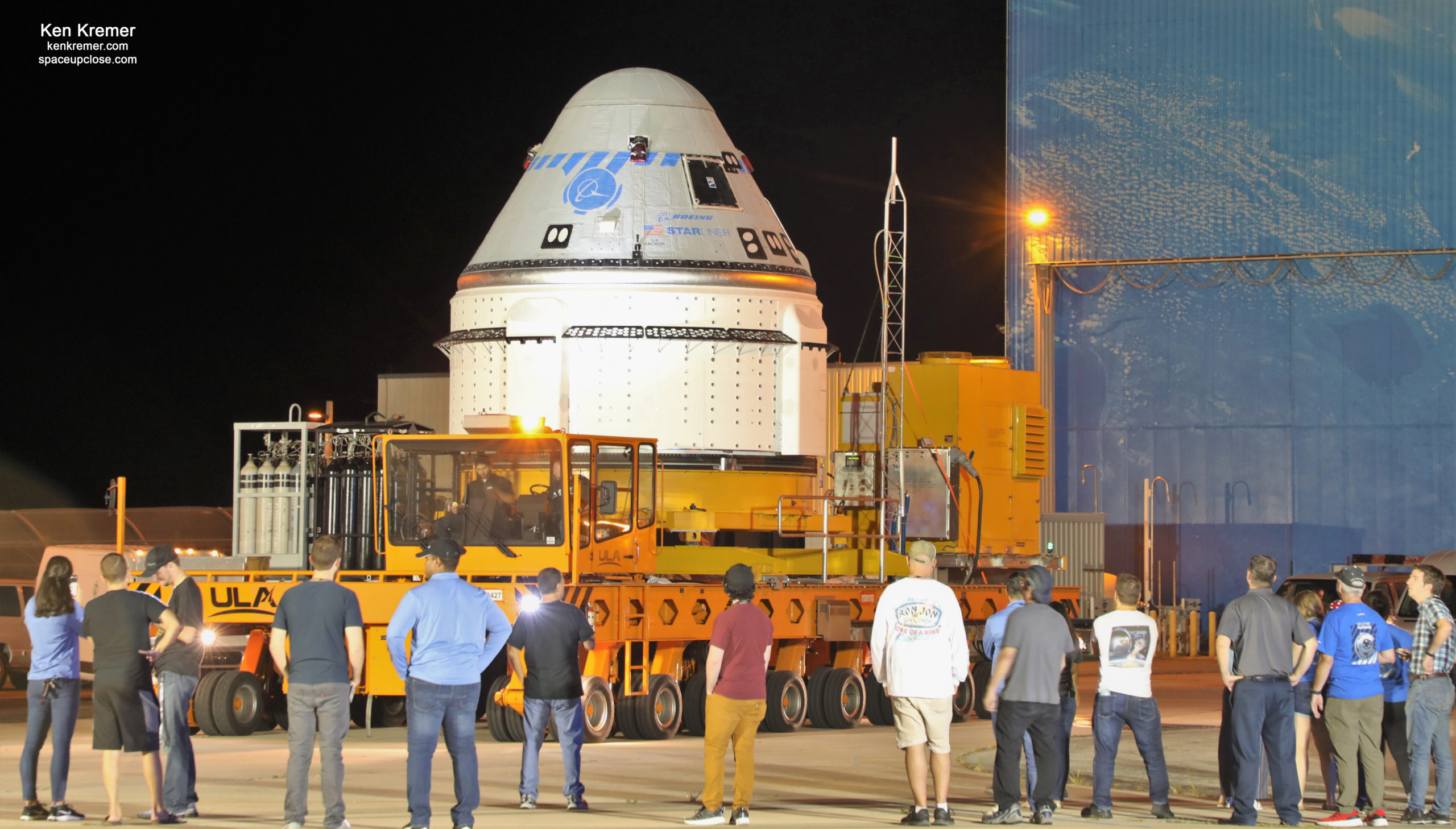
For SpaceUpClose.com & RocketSTEM
KENNEDY SPACE CENTER, FL – NASA officials cleared the launch of Boeing’s Starliner CST-100 crew capsule ferry ship to conduct a second unpiloted test flight on July 30 on what amounts to a critical ‘redo’ mission to prove the commercial system can safely carry NASA astronauts to and from the International Space Station (ISS) after it failed to dock on the inaugural problem plagued orbital flight test (OFT) mission in Dec. 2019.
Following a thorough assessment by top managers from NASA and Boeing and technical personal during the Flight Readiness Review (FRR) on Thursday, July 22, the GO was given to proceed with launch preparations for the Starliner Orbital Flight Test-2 (OFT-2) mission at the end of July from Florida’s Spaceport.
“NASA and Boeing are proceeding with plans for the uncrewed Orbital Flight Test-2 (OFT-2) mission to the International Space Station following a full day of briefings and discussion during a Flight Readiness Review that took place at the agency’s Kennedy Space Center in Florida,” NASA confirmed.
⚠️ ONE. WEEK. AWAY. ⚠️@NASA's @BoeingSpace Orbital Flight Test-2 launch is scheduled for Friday, July 30 at 2:53 p.m. ET from Space Launch Complex-41. Interested in learning more about the mission? Join our virtual @NASASocial: https://t.co/XyfmKbXOa9 pic.twitter.com/jIuCC4aNla
— NASA Commercial Crew (@Commercial_Crew) July 23, 2021
“After reviewing the team’s data, and the readiness of all the parties, everybody said ‘go’ for the launch,” said Kathy Lueders, NASA’s director of spaceflight, at the post FRR briefing .
“To me, this review was a reflection of the diligence and the passion of this Boeing and NASA team that really chose to learn and adapt and come back stronger for this uncrewed demonstration mission.”
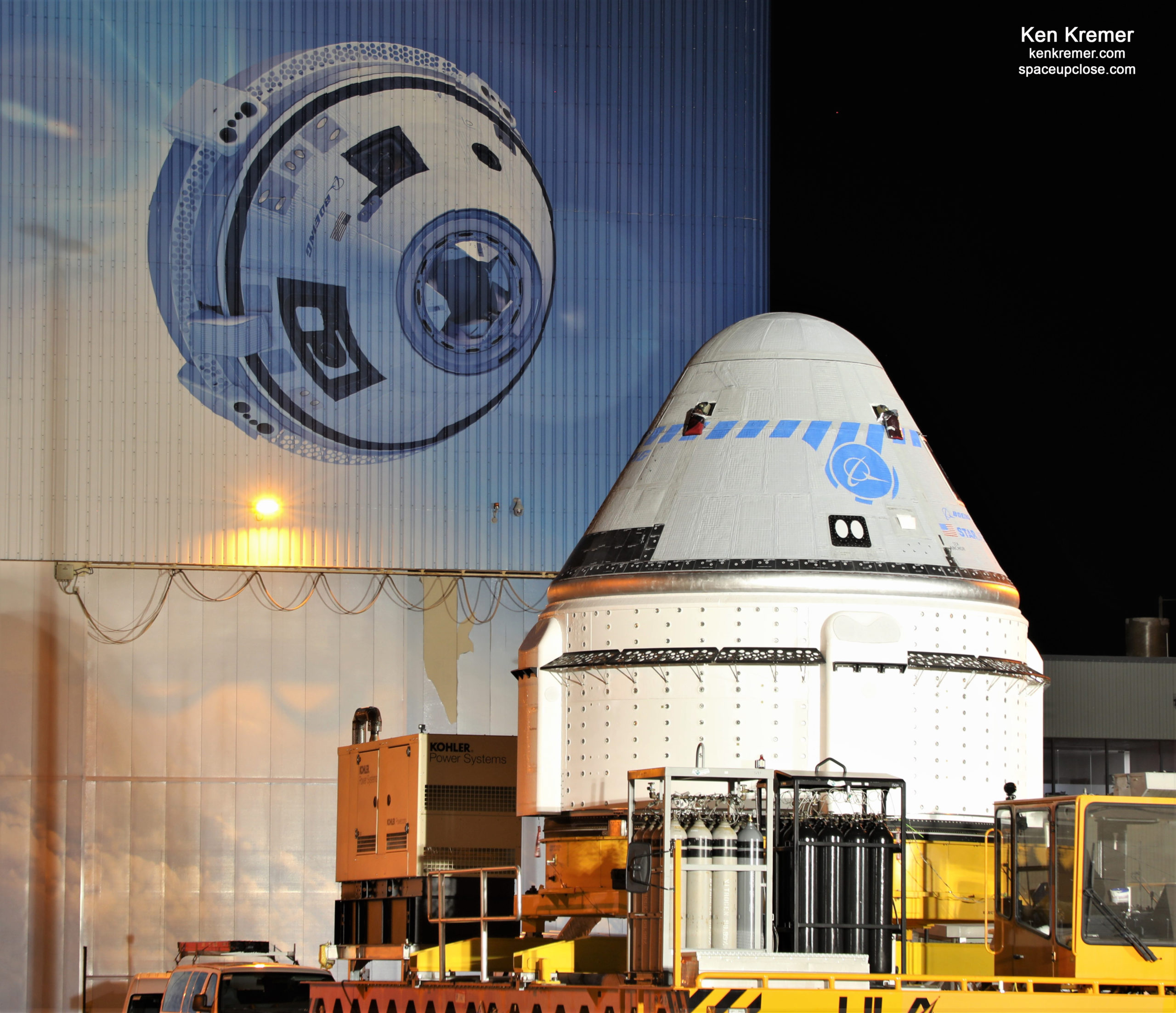
Launch of the Boeing Starliner OFT-2 mission is slated for 2:53 p.m. EDT (1853 GMT) on Friday, July 30 on a United Launch Alliance (ULA) Atlas V rocket from Space Launch Complex-41 on Cape Canaveral Space Force Station, Florida.
The Boeing Starliner is part of NASA’s Commercial Crew Program (CCP) to restore human spaceflight launch capabilities to the US and end total reliance on the Russian Soyuz crew capsule.
The OFT-2 launch follows up on the botched first orbital test flight (OFT) of the commercial astronaut space taxi in Dec. 2019 that failed to reach the station and experienced numerous problems due to numerous faulty software issues and communications problems shortly after separation from the ULA Atlas V which performed flawlessly.
Everything is on the line for Boeing with this mission – and truly one can say ‘Failure is not an Option.’
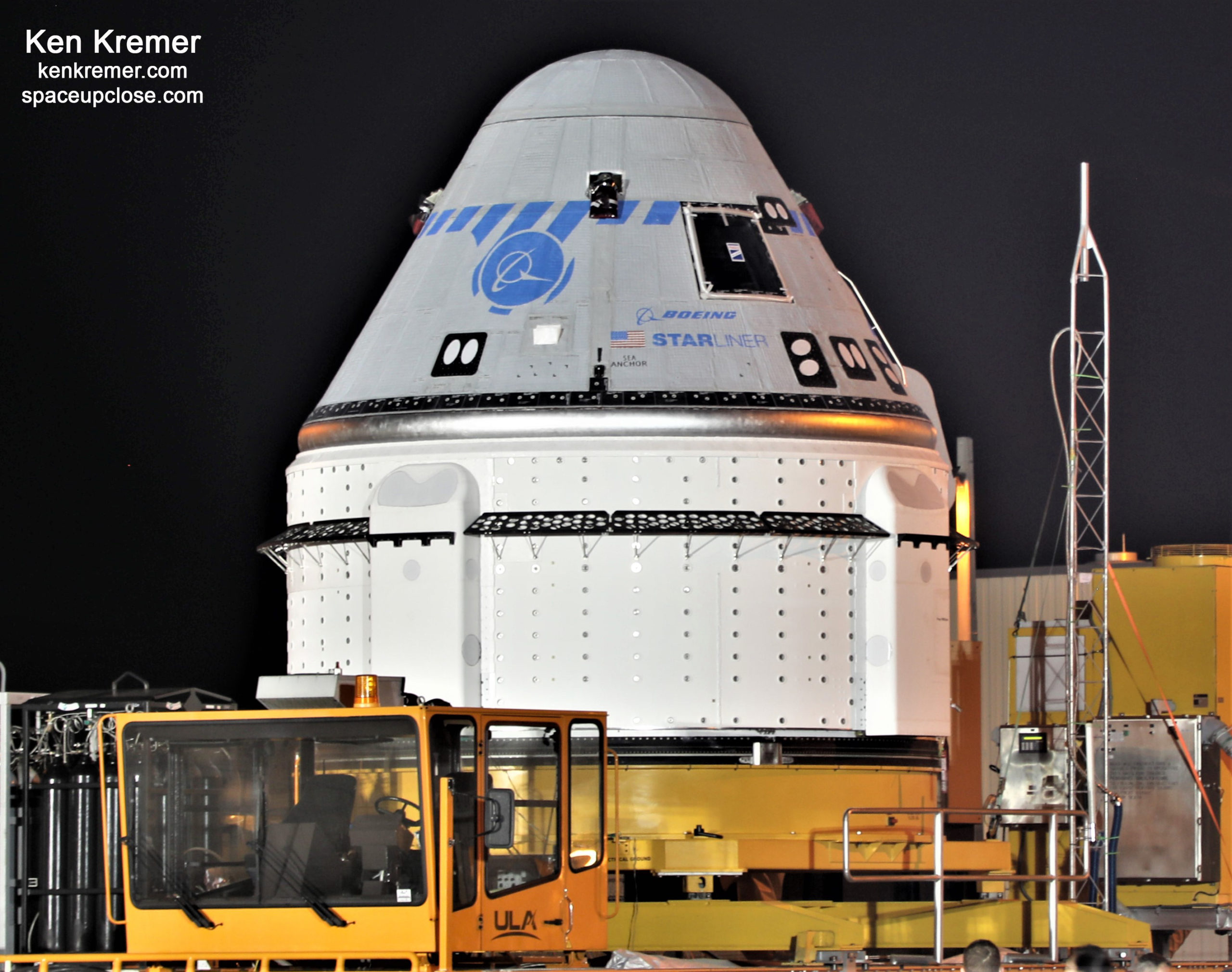
The FRR involves an in-depth review of all system to assess Starliner’s readiness for flight by NASA and Boeing.
We're on the road to launch! #Starliner’s Orbital Flight Test-2 is set to launch at 2:53 p.m. ET on July 30.
Tune in at ~2:00 p.m. ET for the start of the broadcast, which you can watch here: https://t.co/ziK3KepBB0 pic.twitter.com/9JZ0gkN2Cw
— Boeing Space (@BoeingSpace) July 24, 2021
During the FRR review “teams gather to hear presentations from key mission managers as part of an in-depth assessment on the readiness of flight for Boeing’s CST-100 Starliner spacecraft and systems, mission operations, support functions and readiness of the space station program to support Starliner’s mission to the microgravity laboratory.”
🚀 @NASA and @BoeingSpace are holding a Flight Readiness Review today to prepare for the Orbital Flight Test-2 mission.
This review is an in-depth assessment on the readiness of flight for Boeing’s #Starliner spacecraft, mission operations and more: https://t.co/kTnltfYoKB pic.twitter.com/RDpM5clKjJ
— NASA Commercial Crew (@Commercial_Crew) July 22, 2021
The goal of OFT-2 mission is to test the end-to-end capabilities of Starliner from launch to docking, atmospheric re-entry, and a desert landing in the western United States.
OFT-2 will provide valuable data that will help NASA certify Boeing’s crew transportation system to carry astronauts to and from the space station.
Our #Starliner team successfully completed its final Mission Dress Rehearsal before Orbital Flight Test-2 launches Friday, July 30, 2:53 p.m. ET.
Watch the launch and get more information on the mission here: https://t.co/uY6FWdRdVr pic.twitter.com/LjYL5LJ0AA
— Boeing Space (@BoeingSpace) July 23, 2021
If the flight proceeds as planned after liftoff and separation Starliner will dock at the ISS on Sat., July 24 almost 24 hours after liftoff
It will remain docked until about Aug. 5.
Starliner is loaded with more than 400 pounds of NASA cargo and crew supplies.
Also aboard in place of humans is Rosie the Rocketeer, the Boeing’s anthropometric test device which will be seated the commanders seat on a repeat flight.
During OFT-1, Rosie was outfitted with 15 sensors to collect data on what astronauts will experience during flights on Starliner, said NASA.
“For OFT-2, spacecraft data capture ports previously connected to Rosie’s 15 sensors will be used to collect data from sensors placed along the seat pallet, which is the infrastructure that holds all the crew seats in place.”
On the return trip Starliner will carry over 550 pounds of cargo, including reusable Nitrogen Oxygen Recharge System (NORS) tanks that provide breathable air to station crew members.
Starliner will provide NASA a second redundant path to send astronauts to the ISS.
NASA has already certified the SpaceX Crew Dragon which has already launch 3 crewed missions of astronauts to the ISS over the past year.
A fourth Crew Dragon mission dubbed Crew-3 is targeted for liftoff on Oct. 31 with an international team of four astronauts who will replace the current Crew-2 astronauts who launched on the prior NASA contracted SpaceX Crew Dragon mission in May.
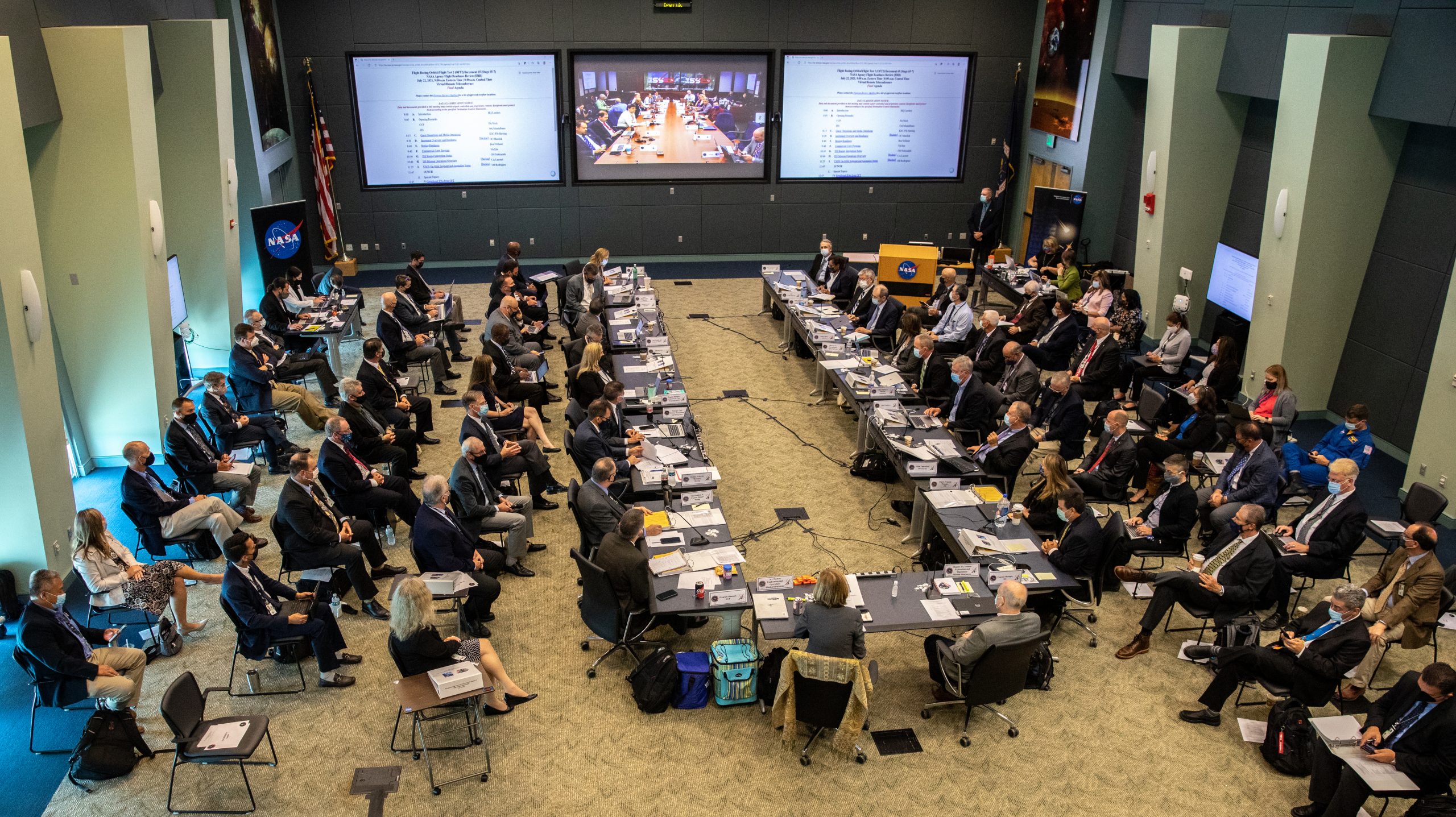
After more than a year of hardware and software fixes and upgrades Boeing’s CST-100 Starliner crew spacecraft rolled out in the dead of night Saturday, July 17, from the company’s Commercial Crew and Cargo Processing Facility (C3PF) manufacturing building at NASA’s Kennedy Space Center to the launch pad on the Cape – destined for Boeing’s second unpiloted test flight.
Enjoy my photos of the Starliner rollout for Space UpClose.
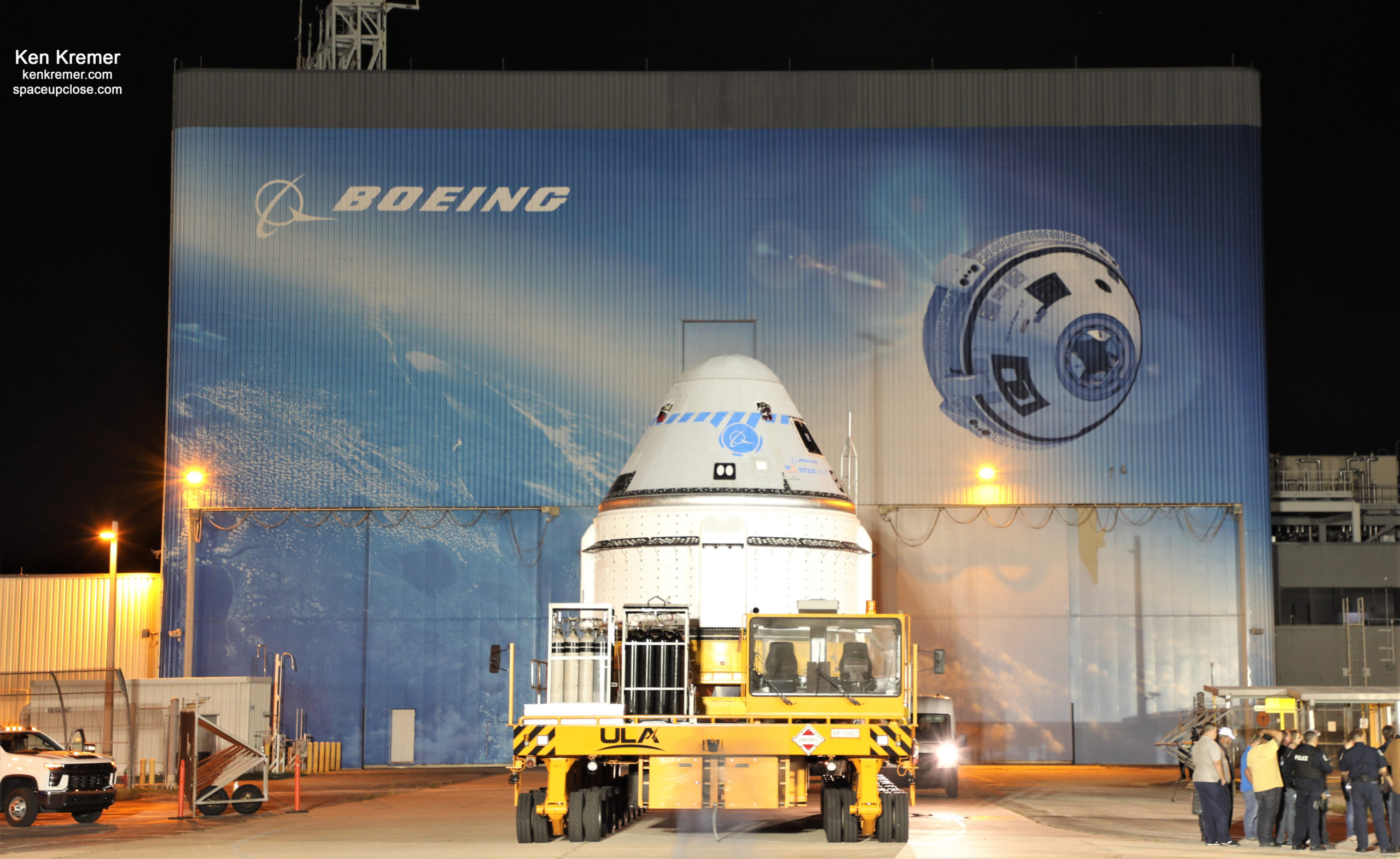
Starliner emerged from the C3PF, a former space shuttle processing hangar, in the middle-of-the-night at about 3:30 a.m. EDT Saturday and traveled atop a transport vehicle for a 10-mile (16-kilometer) trek to United Launch Alliance’s (ULA) Vertical Integration Facility (VIF) at Cape Canaveral Space Force Station pad 41 for mating with the Atlas V carrier rocket.
After completing the hour-long trip to the VIF to Space Launch Complex-41. technicians hoisted the Starliner capsule for stacking and integration atop the already assembled and waiting ULA Atlas V carrier rocket inside the 30-story-tall VIF later on Saturday.
The OFT-2 launch follows up on the botched first orbital test flight (OFT) of the commercial astronaut space taxi in Dec. 2019 that failed to reach the station and experienced numerous problems shortly after separation from the ULA Atlas V which performed flawlessly.
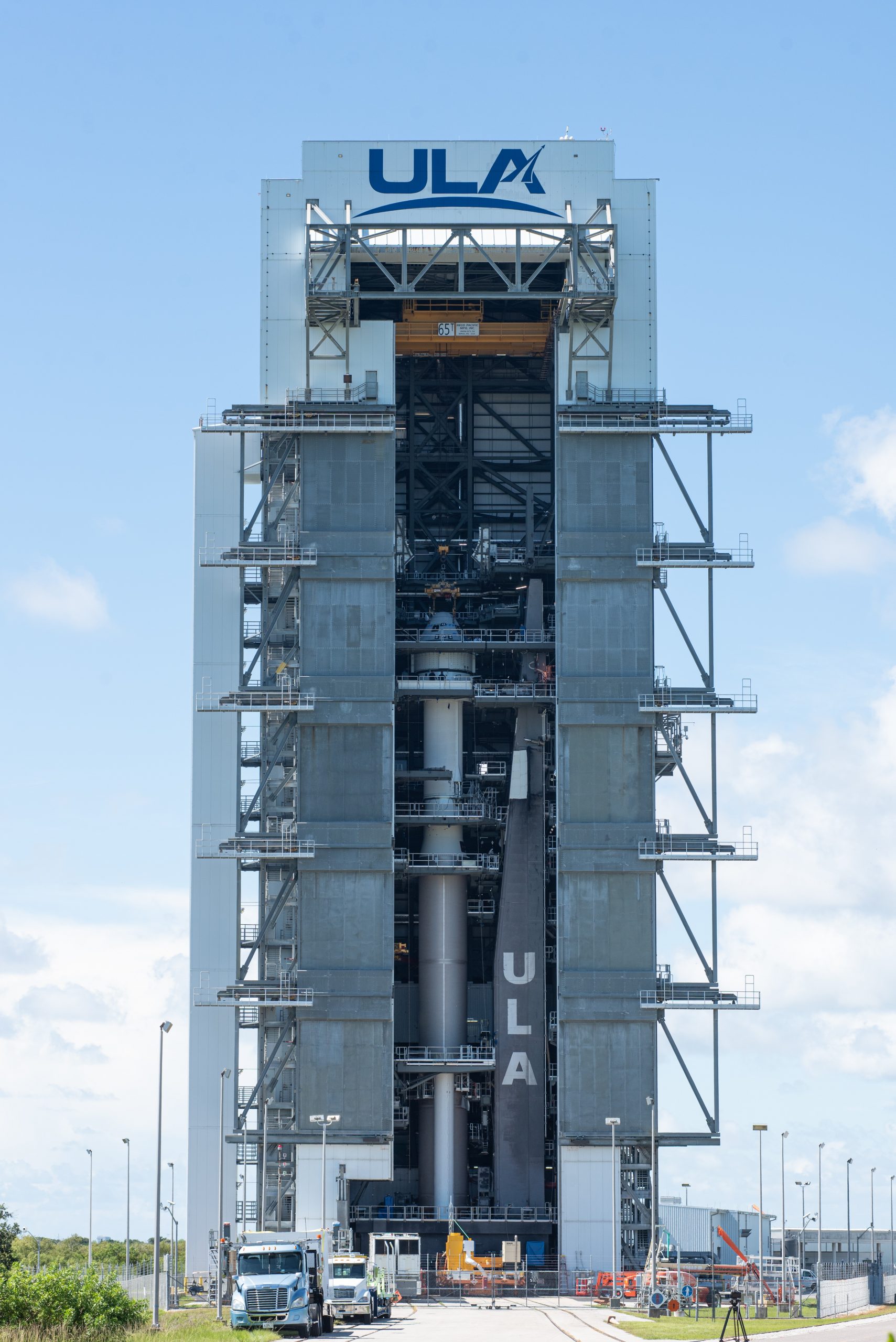
The goal of a second uncrewed test flight OFT-2 is to verify the Starliner CST-100 commercial space taxi is safe and reliable enough to be entrusted to launch NASA astronauts in the future to the International Space Station (ISS) – perhaps by years end.
The original OFT test flight failed to dock at the ISS as planned following launch on 20 December 2019 when a mission elapsed timing error caused the maneuvering thruster to fire longer than planned and expend excess precious fuel and place the ship in the wrong orbit minutes after liftoff on the ULA Atlas V – which performed flawlessly.
Starliner suffered quite a few other technical failures – especially on the return to Earth where the separation from the service module almost ended in a catastrophic collision but did finally end with a safe parachute assisted landing at White Sands Space Harbor, New Mexico.
Boeing did not run a full end-to-end mission rehearsal prior to the original OFT mission which would have revealed several of the problems that ultimately doomed the test flight.
Following Starliner’s unsuccessful OFT mission a joint NASA-Boeing Independent Review Team (IRT) was formed to conduct a complete review, determine the causes of the failures and make recommendation to solve all the issues.
The IRT issued a report with some 80 recommendations and corrective actions that were all implemented, said NASA and Boeing.
Boeing will fly this second uncrewed Starliner mission OFT-2 at their own expense of some $420 million on an Atlas V targeting liftoff July 30 to prove to NASA the vehicle is safe and reliable.
OFT-2 is the last flight before the Starliner system launches American astronauts on the Crew Flight Test to the microgravity laboratory – the first flight test with crew on board.
If all goes well with OFT-2 a trio of NASA astronauts will fly on the first crewed Starliner mission dubbed CFT (Crew Flight Test) perhaps as soon as years end.
My interviews about the Starliner rollout and the importance of the mission were featured on Fox 35 Orlando on July 26, WFTV ABC 9 News Orlando on July 22 & 23 and WESH 2 NBC News Orlando on July 18 & 19.
https://www.fox35orlando.com/news/nasa-boeing-prepare-for-second-run-at-starlink-launch
https://www.wesh.com/article/boeing-starliner-now-in-brevard-prepares-for-test-flight-redo/37067233
Watch Ken’s continuing reports about Starliner and Commercial Crew and Crew Dragon, Artemis and NASA missions, SLS, Orion, SpaceX, Starlink from onsite for live reporting of upcoming and recent SpaceX and ULA launches including Crew 1 & 2, Demo-2, ISS, X-37B, Solar Orbiter, Mars 2020 Perseverance and Curiosity rovers, NRO spysats and more national security missions and more at the Kennedy Space Center and Cape Canaveral Space Force Station.
Stay tuned here for Ken’s continuing Earth and Planetary science and human spaceflight news: www.kenkremer.com –www.spaceupclose.com – twitter @ken_kremer – email: ken at kenkremer.com
Dr. Kremer is a research scientist and journalist based in the KSC area, active in outreach and interviewed regularly on TV and radio about space topics.
………….
Ken’s photos are for sale and he is available for lectures and outreach events
Please consider supporting Ken’s work by purchasing his photos and/or donating at Patreon:
https://www.patreon.com/kenkremer
x



